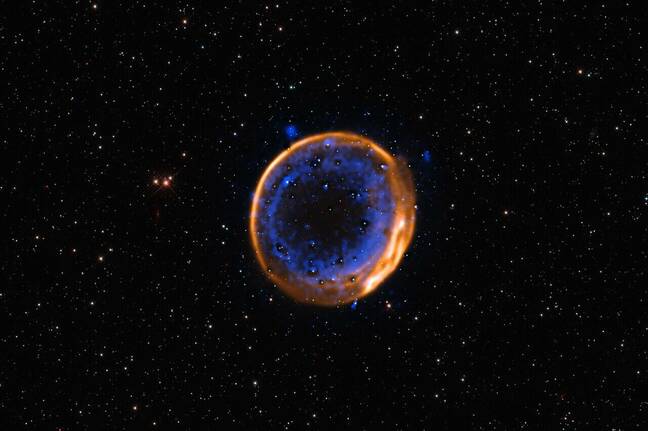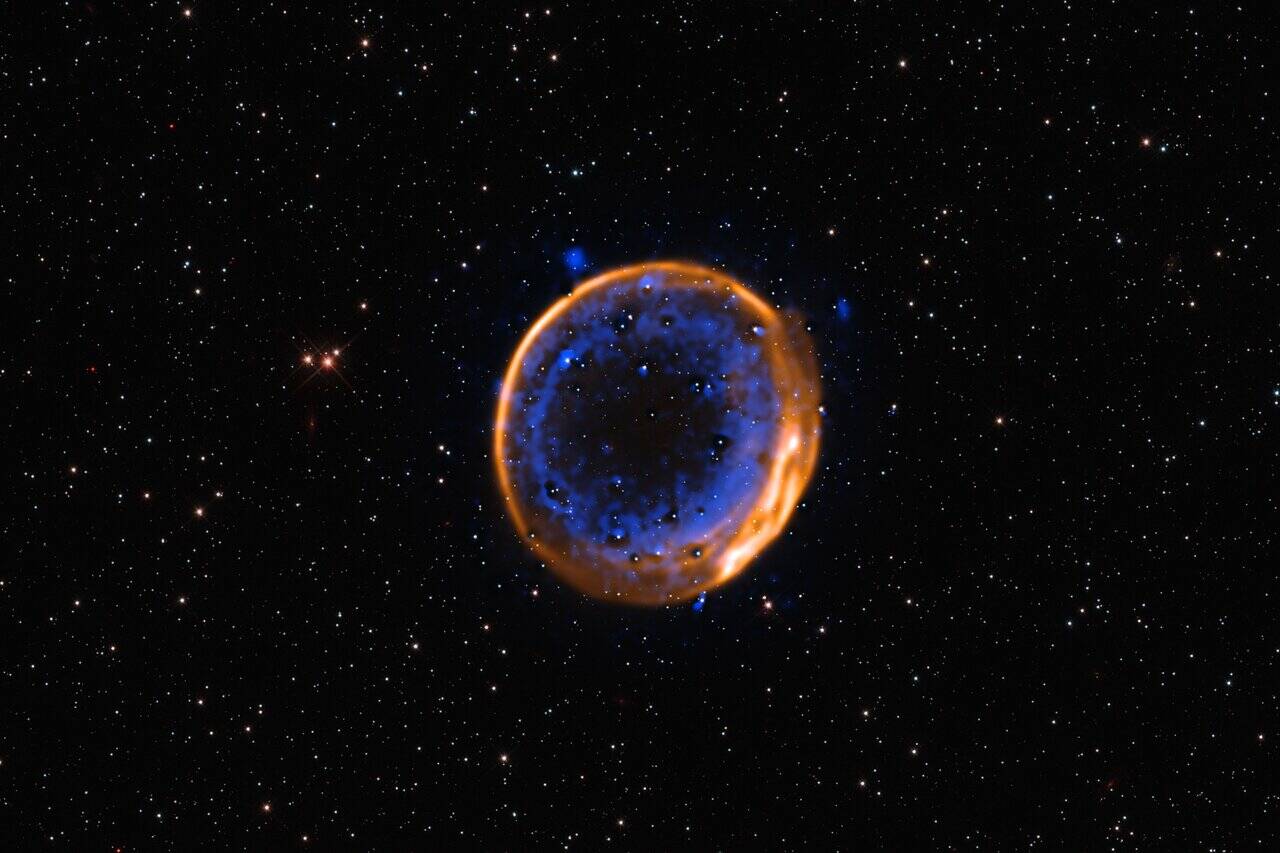Astroboffins have found the first evidence of a double-detonated Type Ia supernova, which could explain why we have enough bright points of reference in the skies to plot our place in the universe.
Data from the European Southern Observatory’s Very Large Telescope (VLT) on SNR 0509-67.5 – a supernova 160,000 light-years from Earth, caused when a white dwarf star hit critical mass and exploded – reveals that the elements created suggest something may have triggered the star to explode ahead of time.
Supernovae like these are very luminous and referred to as “standard candles” in astronomy. As fixed points, they are used to measure the expansion of the universe, but there are a lot more of them than current theories would predict, and new data could explain why.
“The explosions of white dwarfs play a crucial role in astronomy,” said Priyam Das, a PhD student at the University of New South Wales Canberra, Australia, who led the study on SNR 0509-67.5 published [PDF] in Nature Astronomy. “Yet, despite their importance, the long-standing puzzle of the exact mechanism triggering their explosion remains unsolved.”
Type Ia explosions are thought to be caused when two white dwarf stars orbit closely and one accretes mass from another and grows to about 1.4 times the mass of our Sun. This is the Chandrasekhar limit, named after Nobel Prize-winning physicist Subrahmanyan Chandrasekhar, or the maximum mass of a stable white dwarf star. However, spectrographic data from the VLT shows signatures indicating the white dwarf could have detonated earlier due to an elemental collision.
If a white dwarf collects enough helium, the second most abundant element in the universe, this can form a shell around the star and ignite, compressing it and causing an early eruption before the Chandrasekhar limit is reached. That could explain why we have so many points of reference.

SNR 0509-67.5, a bright spot in the universe. Source: ESO
“The classical ‘textbook’ wisdom of how Type Ia supernovae explode is that material is accreted onto a white dwarf star composed of carbon and oxygen,” Professor Friedrich Röpke at the Center for Astronomy of Ruprecht-Karls University told The Register.
“It seems very difficult to grow a white dwarf star to the Chandrasekhar mass. Since these objects are very stable, a drastic event is needed for this. One scenario that was considered to be likely working is the double detonation, where the detonation in the helium shell surrounding the carbon-oxygen white dwarf star triggers the actual detonation of that star.”
The elements we’re made of were formed in exploding stars, and Type Ia supernovae typically eject large amounts of iron. But what the VLT saw was expanding shells of more complex elements such as calcium and sulfur, suggesting the double-detonation idea is correct.
“We are for the first time able to provide direct observational support for this (before only hypothetical) scenario,” Professor Röpke explained.
“We see two shells of heavy elements that are produced by two subsequent and spatially separated detonations. Calcium is one of these elements and it can be observed well with our methods. So, it is a tracer of the double detonation structure, but similar double shell structures are also expected in other heavy elements produced in the detonations.” ®
